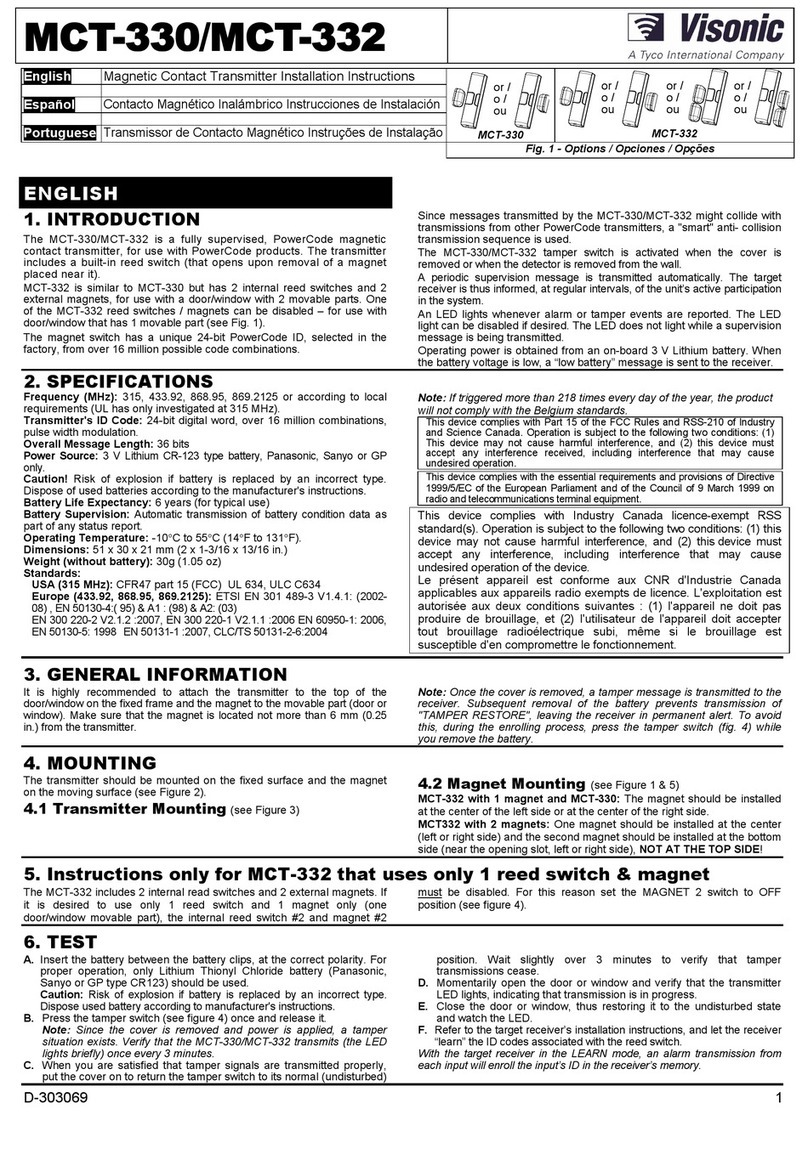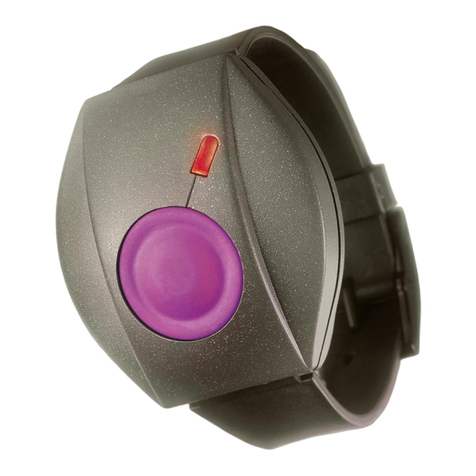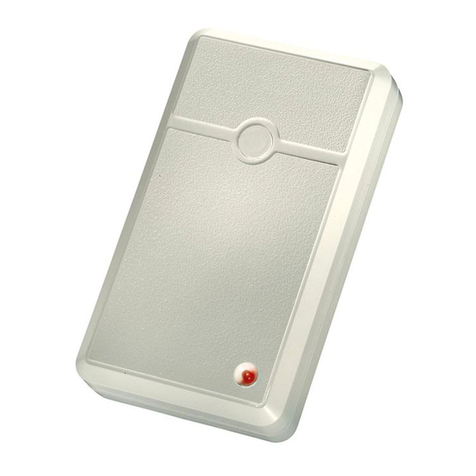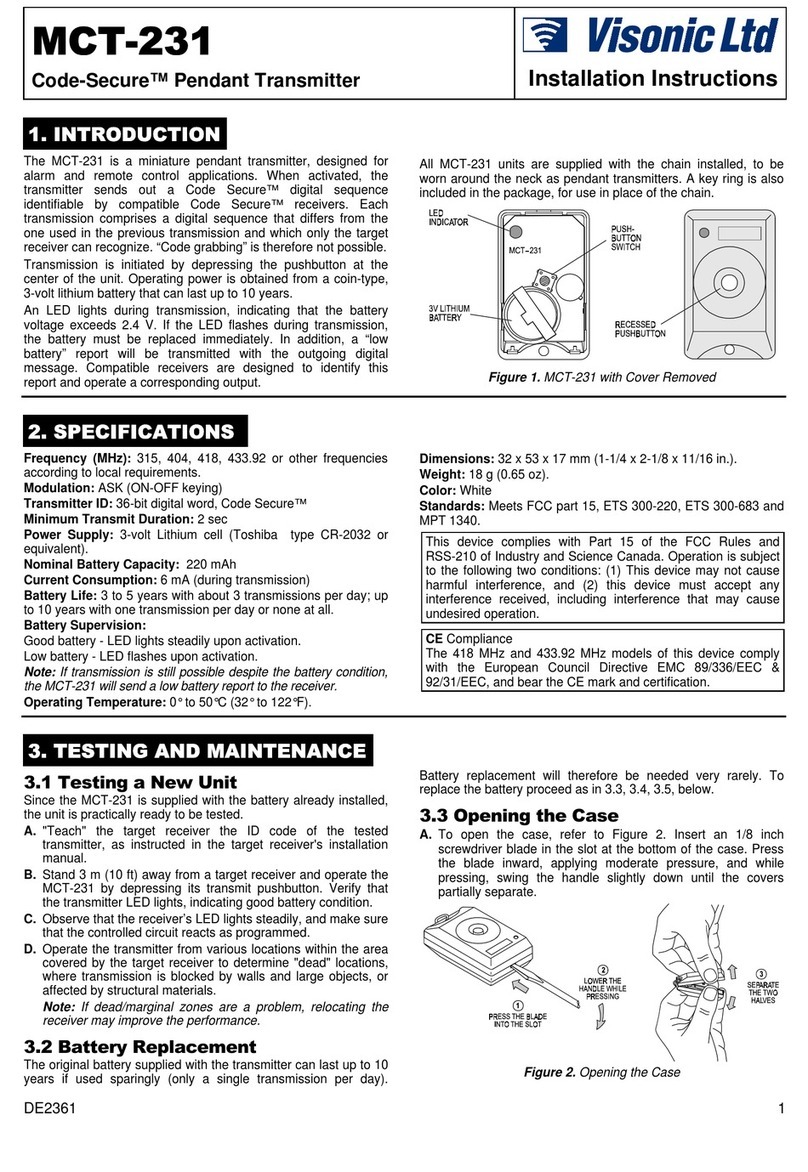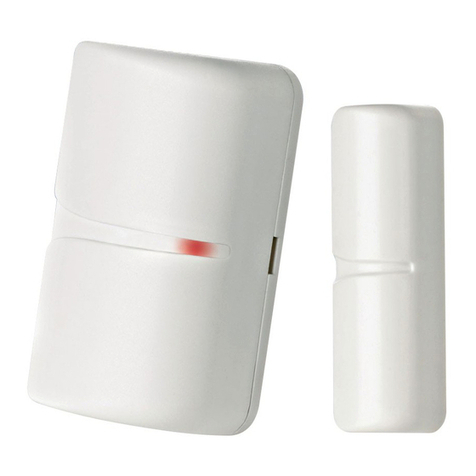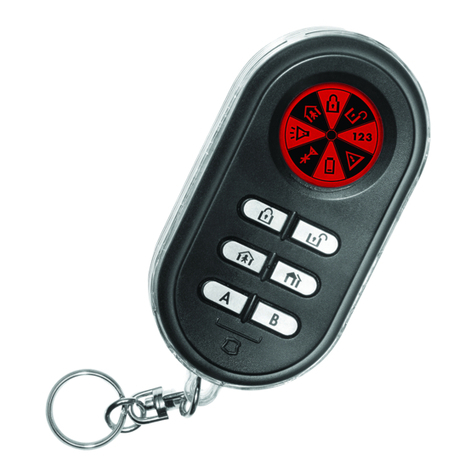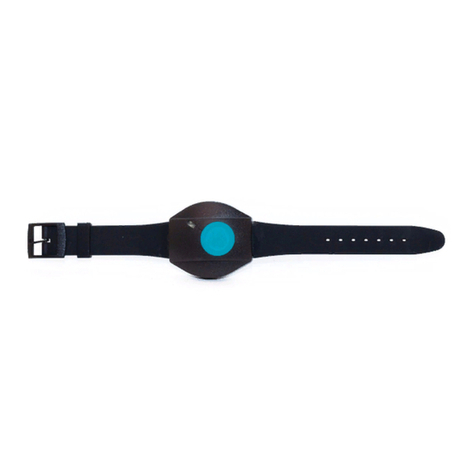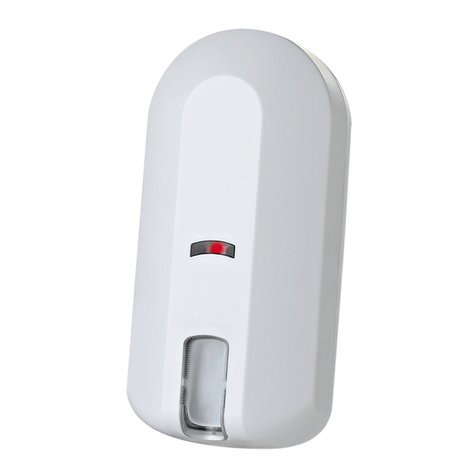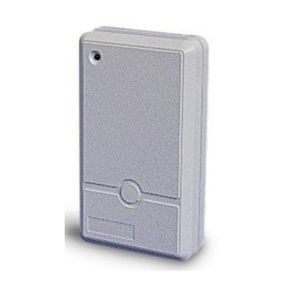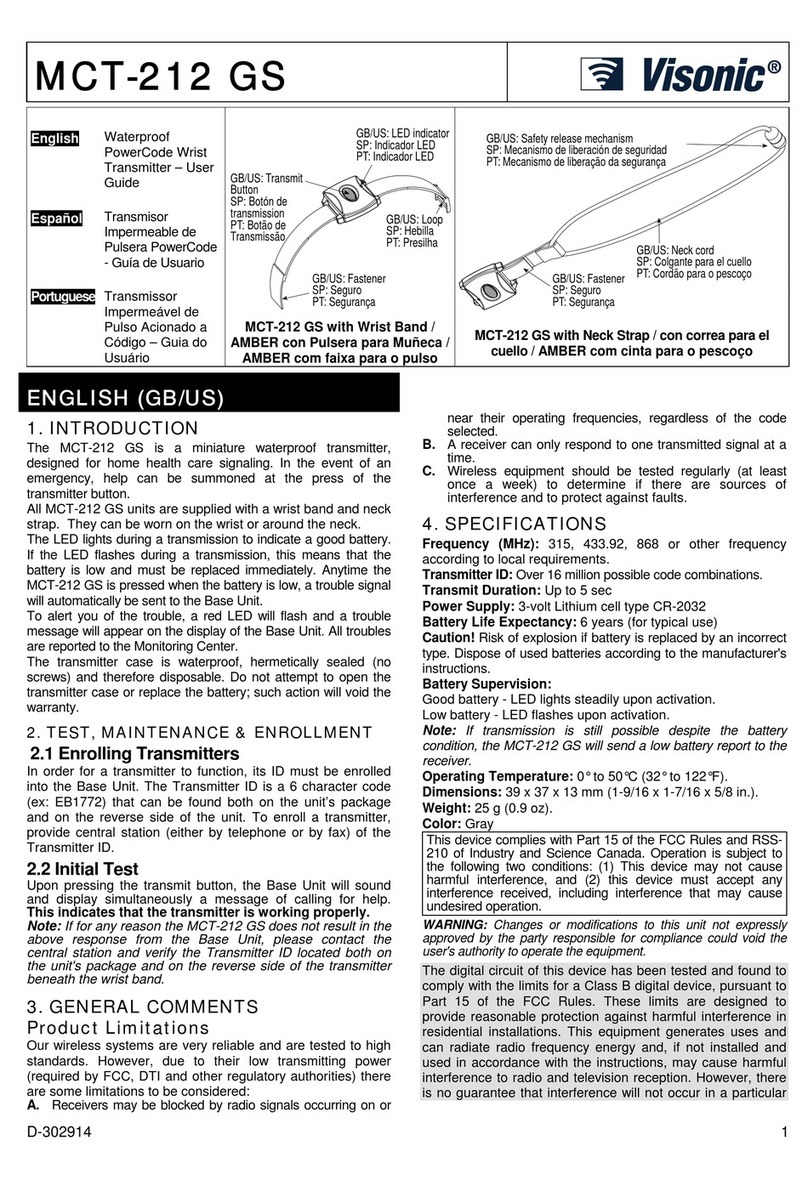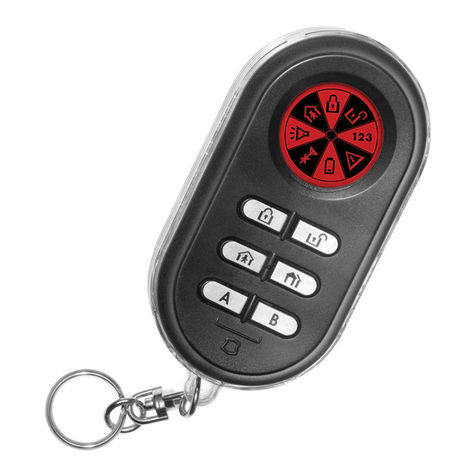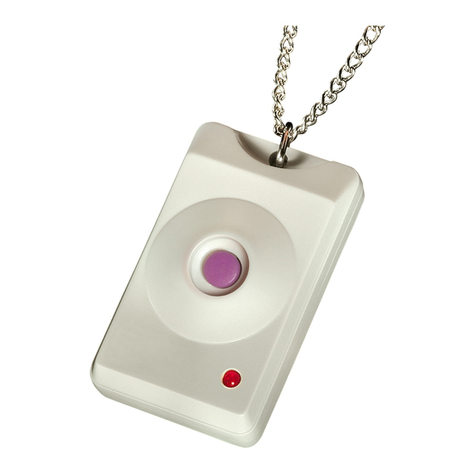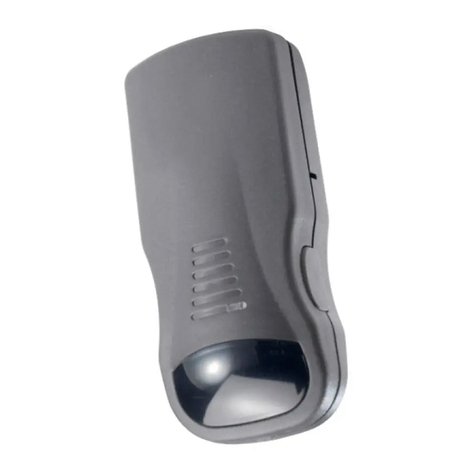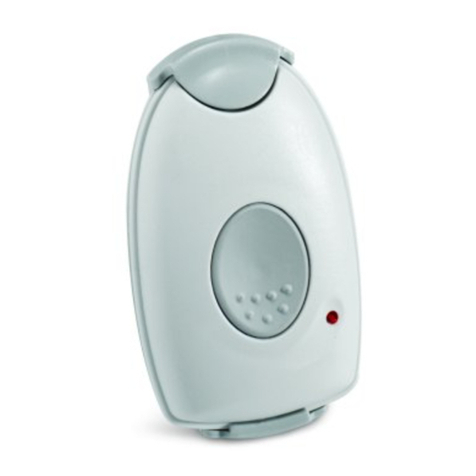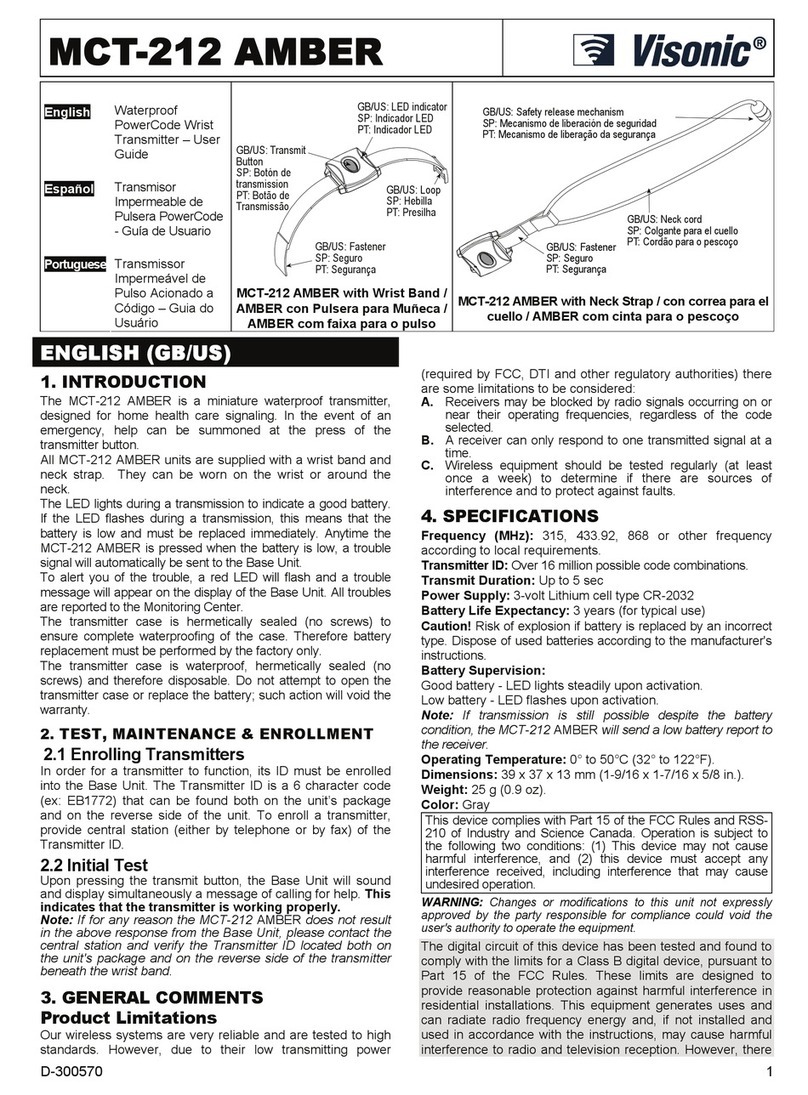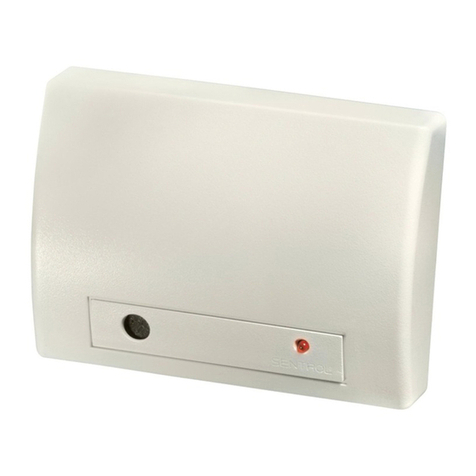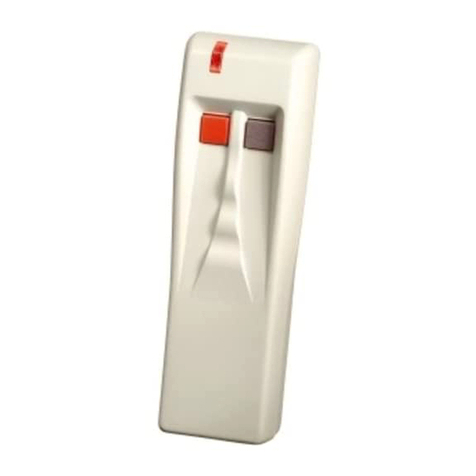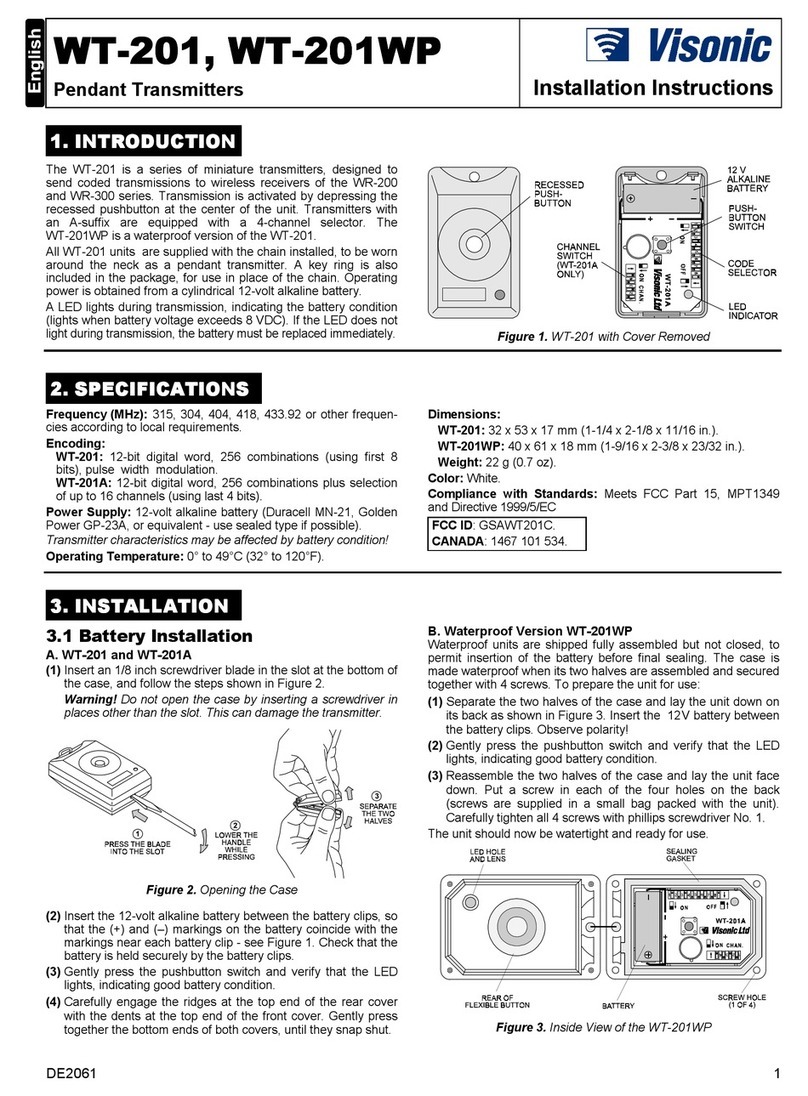D-304457 PB-101/102 User’s Guide 3
5.2 Replacing the Battery
Replace the battery at least once every 5 years, or upon
observing that the LED flickers when transmitting. The required
battery is CR2032 Lithium 3V, manufactured by VARTA or
another UL-recognized manufacturer, purchased from a Visonic-
approved supplier.
NOTE: The polarity of the battery must be observed, as
shown in Figure 7. Improper handling of lithium batteries
may result in heat generation, explosion or fire, which may
lead to personal injuries.
WARNING: Danger of explosion if batteries are installed
incorrectly. Replace only with the same or equivalent type
recommended by the manufacturer. Keep away from small
children. If batteries are swallowed, promptly see a doctor.
Do not try to recharge these batteries. Disposal of used
batteries must be made in accordance with the waste
recovery and recycling regulations in your area.
1. Insert a coin into the slot on the bottom center of the device
and twist to separate the two sides.
2. Then, slide the coin to the corner of the device and twist again
to remove the cover.
Figure 6. Opening the PB-101/102
Note: Make sure the elastic pad within the cover remains in
place. Put it back in place if it falls off.
+
CR2032
LITHIUM BATTERY
3V
Figure 7. Replacing the Battery
3. Extract the old battery from its holder, and replace it with a
recommended new battery. Ensure that the plus side of the
battery faces up, attaining correct polarity.
4. Test the unit by momentarily pressing one of the transmit
switches. The LED indicator should light.
5. Put the covers back on securely, verifying that it snaps shut.
5.3 Cleaning
The pendant may get dirty if touched with greasy fingers. Clean it
only with a soft cloth or sponge moistened lightly with a mixture of
water and mild detergent, and wipe it dry immediately.
The use of abrasives of any kind is strictly forbidden. Also
never use solvents such as kerosene, acetone or thinner.
Do not submerge this product in any liquid, in order to
prevent damage to the electronic circuits.
6. PRODUCT LIMITATIONS
6. PRODUCT LIMITATIONS6. PRODUCT LIMITATIONS
6. PRODUCT LIMITATIONS
Visonic wireless systems are very reliable and are tested to high standards. However, due to their low transmitting power and limited
range (required by FCC and other regulatory authorities), there are some limitations to be considered:
A. Receivers may be blocked by radio signals occurring on or near their operating frequencies, regardless of the code selected.
B. A receiver can only respond to one transmitted signal at a time.
C. Wireless equipment should be tested regularly to determine whether there are sources of interference and to protect against faults.
Frequency Allocations for Wireless Devices in European (EU) Countries
433.92 MHz has no restriction in any EU member state.
7
77
7. COMPLIANCE WITH STANDARDS
. COMPLIANCE WITH STANDARDS. COMPLIANCE WITH STANDARDS
. COMPLIANCE WITH STANDARDS
The PB-101/102 PG2 complies with the following:
EN 300220, EN 301489 EN 50130-4, EN 50130-5, EN 61000-6-3, EN 60950-1, EN 50131-1, EN-
50131-3 and EN-50131-6 Type C.
Certified by Applica Test and Certification
The PB-101 PG2 and PB-102 PG2 are compatible with the RTTE requirements - Directive
1999/5/EC of the European Parliament and of the Council of 9 March 1999.
USA: CFR 47 part 15 (FCC),
Canada: RSS 210,
The Power G peripheral devices have two- way communication functionality, providing additional
benefits as described in the technical brochure. This functionality has not been tested to comply with
the respective technical requirements and should therefore be considered outside the scope of the
product’s certification.
